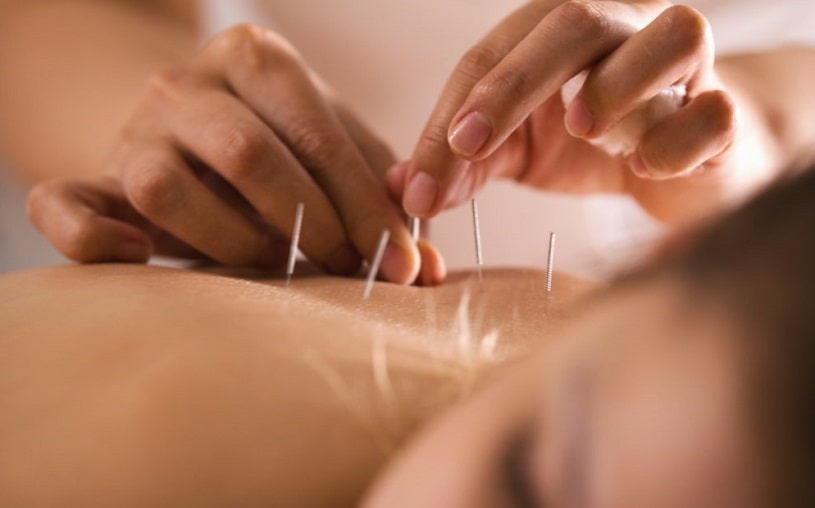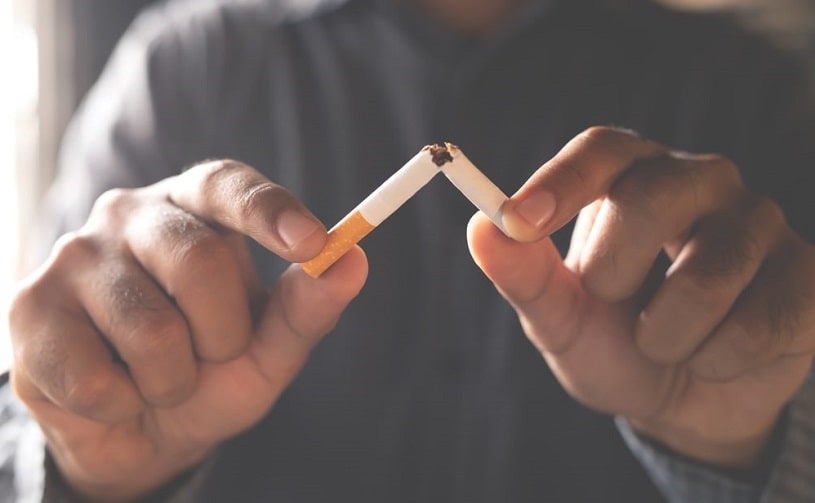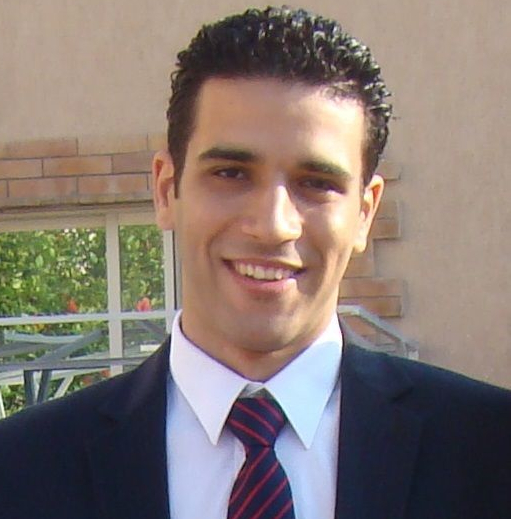Acupuncture, also known as stylostixis, is a form of alternative medicine that originated from Ancient China as early as 3000 years ago and is one of the oldest forms of traditional Chinese medicine. It involves the insertion of fine metal needles into specific points in the body, which are believed to enhance the flow of energy. Stylostixis has been used to treat a wide range of medical conditions such as chronic stress, chronic muscle pain, addiction, chronic or recurrent headaches, osteoarthritis, and so on.
Table Of Contents:
Understandably, an increasing number of scientific studies have tackled the task of pinpointing the health benefits of acupuncture and help discover if there is a medical link between acupuncture and addiction treatment.
How does acupuncture work? Are there any proven benefits? Learn here.
What Is Acupuncture?
Acupuncture is an ancient form of traditional Chinese medicine and is considered a form of alternative holistic approach within the Western world. It involves the insertion of fine metal needles into specific points in the body known as acupoints by a certified professional known as an acupuncturist. These points are believed to lie along the natural flow of energy within the body.

The art of correctly inserting these needles can lead to the release of hindrances to the energy flow within the body or prevent excessive energy flow.
How Does Acupuncture Work?
There is no consensus in medicine on how it works precisely, but there are several vital theories. So, how does acupuncture work? The Chinese believed that the insertion of the needles into specific points could improve the flow of energy through the body and cure certain physical and mental conditions. However, current studies have proposed two possible scientific mechanisms behind how stylostixis works, especially concerning the treatment of health conditions such as chronic pain.
One mechanism used to explain the immediate action of stylostixis is known as diffuse noxious inhibitory control (DNIC) or conditioned pain modulation (CPM). It refers to the situation in which noxious or painful stimuli applied at distant points inhibit another painful stimulus. The quick onset of this mechanism is one of the key benefits of acupuncture.
Another possible mechanism that may explain how it works is the release of endogenous opioid peptides by the body in response to the slight noxious stimuli produced by the stylostixis needles. However, this takes about 15-20 minutes to take effect and therefore does not explain the immediate pain relief attributed to stylostixis.
Stylostixis Has Been Used in the Treatment of Health Conditions Such As:
- Chronic lower back pain
- Osteoarthritis
- Migraines
- Rheumatoid arthritis
- Postoperative nausea and vomiting
- Hot flashes
- Mood disorders
- Substance use disorders, etc
Acupuncture And Addiction Treatment
The use of stylostixis in addiction treatment is not yet widely supported, and there is little evidence supporting the health benefits of acupuncture for addiction, leading to much controversy. However, a research study done by Lin et al. demonstrated the possible promise of stylostixis in treating withdrawal symptoms and reducing cravings and drug-seeking behavior.
A report states that well over 700 addiction institutions use stylostixis intervention as part of holistic treatment for all kinds of addiction recovery. The influence of the therapy is hinged on the detoxifying effect caused by the stimulation of acupoints with needles.
Acupuncture to Quit Smoking
Several pieces of research concerning the effectiveness of using acupuncture to quit smoking have been carried out. While the poor methodology was a primary concern in several medical studies concerning the use of acupuncture to quit smoking, a research study in 2019 showed that the use of acupuncture to quit smoking was more effective than attempting to quit on your own without professional help.

The research also showed that using acupuncture to quit smoking was most effective when combined with medical addiction counseling and a smoking cessation educational program, which was found to help short-term and long-term smoking cessation.
Acupuncture For Alcoholism
While there is a lack of information concerning the use of acupuncture for alcoholism, a study showed that one of the benefits of acupuncture for alcoholism was its potential to reduce craving and withdrawal anxiety after treatment. Therefore using acupuncture for alcoholism could be a viable part of alcohol addiction treatment for many people.
Acupuncture For Addiction to Opiates
An evaluation conducted on the efficacy of acupuncture for addiction by investigating the reactions on opiate addict patients proved a significant decrease in the rigorousness of withdrawal symptoms. Furthermore, it was especially effective when combined with other treatments for opioid withdrawal, such as pharmacological intervention or cognitive behavior therapy.
Compared to the state of the patients before the therapy, the administration of acupuncture for addiction affected the functions of the hypothalamus and the dopamine systems. Thus, the results have shown that stylostixis for opiate addiction may be helpful mainly as an adjunctive treatment. However, further research on the benefits of acupuncture is still necessary.
How Stylostixis Affects Neurotransmitters
While the mechanism behind the effectiveness of stylostixis may not yet be fully understood, research has shown that the technique has significant effects on the brain, especially the neurotransmitters involved in the pain modulatory pathway.
So, how does acupuncture work? Does it help improve the functions of neurotransmitters?
Here Are Some Neurotransmitters Affected by Stylostixis Intervention:
Endorphins
These are pain-relieving chemicals that are usually released to alleviate pain and stress in the tissues. It is believed that stylostixis intervention releases endorphins in the body, which is exceptionally significant for patients who are going through the process of recovery from addictions. The withdrawal symptoms often present with the body and joint pains. Hence, the presence of endorphins in the body is beneficial for recovery.
Dopamine
Medical professionals observe that people with addictions to alcohol and hard drugs such as morphine, cocaine, and others usually have extremely high levels of dopamine deposits. This substance is responsible for the feeling of euphoria experienced when indulging in these substances.
A decline in dopamine levels in the system, caused by withdrawal from drugs or alcohol, can lead to mental distress, anxieties, depression, a feeling of sadness, and intense craving. Stylostixis can assist with alleviating these feelings.
Serotonin
The presence of serotonin in the body creates a feeling of calm and relieves anxiety. The production of serotonin is affected by stylostixis intervention as well. Other neurotransmitters that are affected by stylostixis are amino acids and catecholamine.
Addiction Treatment Programs That Use Needle Therapy
Acupuncture and addiction treatment may go hand in hand with other forms of therapy, as well. However, it is essential to note that stylostixis intervention alone isn’t enough as a treatment regimen for addiction treatment. Other techniques such as EMDR therapy, rational emotive behavior therapy, one-on-one counseling, group and family sessions, and other evidence-based methods are required for a more effective treatment. Some treatment programs integrate acupunctural therapy into their schedules to ensure a full recovery.
Some of These Therapies Include:
- Trauma therapy
- Group therapy
- Individual addiction treatment plans
- Dual diagnosis therapy
- Relapse prevention plan
- Experiential therapy
Substance addiction often presents with discomfort and distress when one goes through a detox process. Whatever the treatment of choice, whether holistic natural remedies or the use of drugs, it is necessary to opt for the safest methods with the capacity to provide long-lasting healing. Stylostixis intervention can be integrated into any program alternative to 12 step programs.
Stylostixis self-treatment is not advised because this therapy should be applied by trained personnel to avoid any harm.
Getting Treatment for Addiction
Addiction is a severe and potentially life-threatening health condition that significantly affects our lives emotionally, physically, and socially. Stylostixis is becoming an increasingly viable option for managing various forms of addiction if done correctly. If traditional therapies don’t bring results, it can be a good option. It is advisable to seek professional assistance from a certified acupuncturist with the skill to help you manage your drug cravings and withdrawal symptoms and finally overcome your addiction.
Frequently Asked Questions
What Is an Acupuncturist?
An acupuncturist is an individual who practices stylostixis and uses this technique to treat a wide range of health conditions. Most acupuncturists work at private clinics and facilities though they are typically regulated by several regulatory bodies that ensure certification and safety.
Does Acupuncture Really Work?
Yes, it does work, though it is hard to accurately measure just how effective it is. While most research and data surrounding stylostixis have been questionable, several critical studies have demonstrated both the long- and short-term effectiveness of the practice in several health conditions.
How Much Does Acupuncture Cost?
The price of stylostixis therapy varies widely. However, most stylostixis sessions typically cost between $75-$100. In addition, a large number of centers also charge some people an initial consultancy fee of between $100-$300. It also makes stylostixis a viable option for people who can’t afford more orthodox medicine or treatments.
Does Medicare Cover Acupuncture?
Unfortunately, Medicare only covers the cost of stylostixis for chronic lower back pain for most people and will cover for 12 of such visits within 90 days and will not cover more than 20 visits a year. Medicare will also not cover your bill if your doctor decides that your condition is not improving and may even be getting worse.
Hope Without Commitment
Find the best treatment options. Call our free and confidential helpline
Most private insurances accepted
Page Sources
- Lin, J. G., Chan, Y. Y., & Chen, Y. H. (2012). Acupuncture for the treatment of opiate addiction. Evidence-Based Complementary and Alternative Medicine, 2012. https://www.ncbi.nlm.nih.gov/pmc/articles/PMC3296192/
- Motlagh, F. E., Ibrahim, F., Abd Rashid, R., Seghatoleslam, T., & Habil, H. (2016). Acupuncture therapy for drug addiction. Chinese Medicine, 11(1), 1-20. https://www.ncbi.nlm.nih.gov/pmc/articles/PMC4822281/
- He, D., Medbø, J. I., & Høstmark, A. T. (2001). Effect of acupuncture on smoking cessation or reduction: an 8-month and 5-year follow-up study. Preventive medicine, 33(5), 364-372. https://pubmed.ncbi.nlm.nih.gov/11676576/
- Wang, J. H., van Haselen, R., Wang, M., Yang, G. L., Zhang, Z., Friedrich, M. E., ... & Liu, J. P. (2019). Acupuncture for smoking cessation: A systematic review and meta-analysis of 24 randomized controlled trials. Tobacco induced diseases, 17. https://www.ncbi.nlm.nih.gov/pmc/articles/PMC6662782/
- National Center for Complementary and Integrated Health. Traditional Chinese Medicine: What You Need To Know https://www.nccih.nih.gov/health/ytraditional-chinese-medicine-what-you-need-to-know
- National Center for Complementary and Integrated Health. Acupuncture: In-Depth. https://www.nccih.nih.gov/health/acupuncture-in-depth
- Hao, J. J., & Mittelman, M. (2014). Acupuncture: past, present, and future. Global advances in health and medicine, 3(4), 6–8. https://www.ncbi.nlm.nih.gov/pmc/articles/PMC4104560/
- APA Kawakita, K., & Okada, K. (2014). Acupuncture therapy: mechanism of action, efficacy, and safety: a potential intervention for psychogenic disorders?. BioPsychoSocial medicine, 8(1), 4. https://www.ncbi.nlm.nih.gov/pmc/articles/PMC3996195/
- Van Hal, M., Dydyk, A. M., & Green, M. S. (2021). Acupuncture. In StatPearls. StatPearls Publishing. https://www.ncbi.nlm.nih.gov/books/NBK532287/
- Jordan J. B. (2006). Acupuncture treatment for opiate addiction: a systematic review. Journal of substance abuse treatment, 30(4), 309–314. https://pubmed.ncbi.nlm.nih.gov/16716845/
- Wu, S. L., Leung, A. W., & Yew, D. T. (2016). Acupuncture for Detoxification in Treatment of Opioid Addiction. East Asian archives of psychiatry: official journal of the Hong Kong College of Psychiatrists = Dong Ya jing shen ke xue zhi : Xianggang jing shen ke yi xue yuan qi kan, 26(2), 70–76. https://pubmed.ncbi.nlm.nih.gov/27377488/
- Liu, T. T., Shi, J., Epstein, D. H., Bao, Y. P., & Lu, L. (2009). A meta-analysis of acupuncture combined with opioid receptor agonists for treatment of opiate withdrawal symptoms. Cellular and molecular neurobiology, 29(4), 449–454. https://pubmed.ncbi.nlm.nih.gov/19109766/

 Authored by
Authored by  Reviewed by
Reviewed by 











